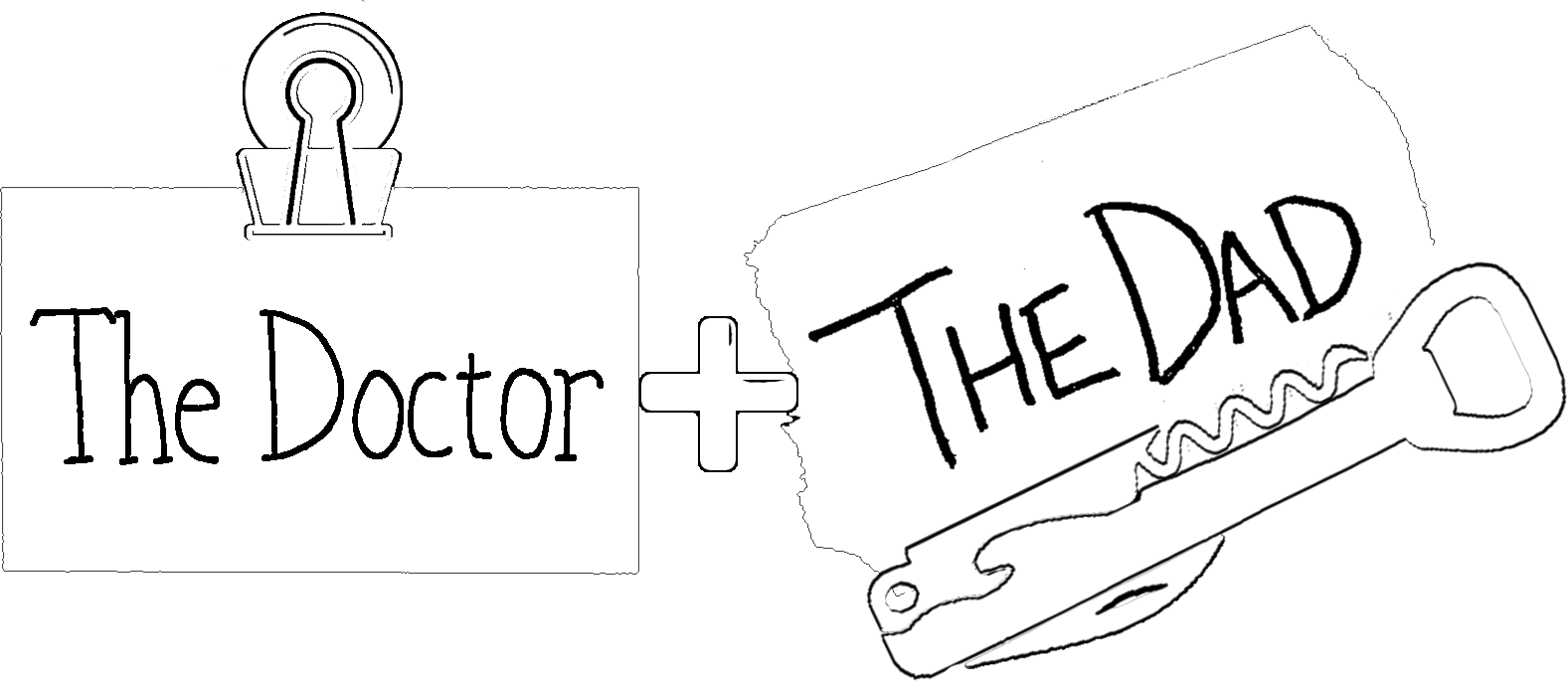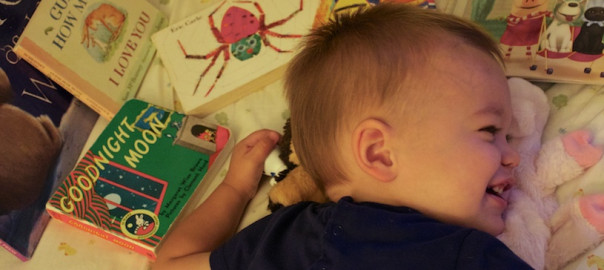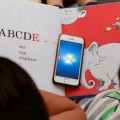If you have little kids, then you probably also have lots and lots of children’s books all over your house. (If you don’t have lots and lots of children’s books all over your house, check out this big, important reason why you should get some!)
 Read a sampling of these tiny tomes, and you’ll probably get the feeling that they’re all pretty much the same. Or at least the very last pages of them are. That’s because tons of modern kids’ stories end with the main character going to sleep. Olivia, Fancy Nancy, When We’re Together, I Love You, Daddy, Bert & Ernie’s First Book of Opposites, and Don’t Let the Pigeon Stay Up Late are a few such books that we just happened to close our eyes and pull off one of our shelves at random. We haven’t actually performed the calculations, but we’re pretty sure the Books That End With Sleep vs. Books Where Everyone Stays Awake ratio falls right around 97 to 1.
Read a sampling of these tiny tomes, and you’ll probably get the feeling that they’re all pretty much the same. Or at least the very last pages of them are. That’s because tons of modern kids’ stories end with the main character going to sleep. Olivia, Fancy Nancy, When We’re Together, I Love You, Daddy, Bert & Ernie’s First Book of Opposites, and Don’t Let the Pigeon Stay Up Late are a few such books that we just happened to close our eyes and pull off one of our shelves at random. We haven’t actually performed the calculations, but we’re pretty sure the Books That End With Sleep vs. Books Where Everyone Stays Awake ratio falls right around 97 to 1.
But it wasn’t always like this.
Back when the Doctor and the Dad were kids, books ended in all sorts of different ways: a guy would be happy about eating some strangely colored breakfast foods, two bear cubs would learn a lesson about cleaning their room, some fat men from space would finish eating all the frozen potato pancakes in the world and then fly their hamburger-shaped spaceships back to their home planet. Sure, there was the sleep-centric, acid-flashback insanity that is Goodnight Moon, but that was more the exception than the rule.
For the record, we totally get why authors and publishers are writing so many books like this these days. They’re trying to help parents put their kids to bed. You read a story that ends with a lovable little wombat going night-night, and it might make your kid more amenable to going night-night himself. “See, son? Going night-night is cool. Everybody is doing it!”
And while we’re not aware of any research study that specifically supports the idea that books about sleep are more effective at making children go to sleep, we do know that peer pressure starts affecting kids’ behavior as early as preschool. So this sleep-by-association scheme makes perfect sense.
But here’s our beef with it:
Reading shouldn’t be something we do only before going to sleep.
Unless of course your goal is to teach your kids to associate reading with sleep (potentially disastrous for future school study sessions) or to end their habit of reading altogether when you eventually stop tucking them into bed at night.
Want to avoid these possible prose-related pitfalls? Then buck the modern trend of bedtime-centered reading, and make sure you share books and stories with your kids all around the clock. Here are some easy ways to make it happen:
- Enjoy an early, pre-breakfast read and cuddle to gently start the day.
- Tote some books to read at the coffee shop or park as a fun mid-day activity.
- Take a break from toys or running around with a rest and a quick read.
- Make regular trips to the library to find new stories.
- Read over breakfast, lunch or dinner.
- Listen to books on tape during cross-town car trips.
And as soon as the drowsy-headed Doctor and Dad finished writing their very last bullet point, they closed their eyes, curled up under a big warm blanket, and went fast to sleep.
…See? Everybody’s doing it.





